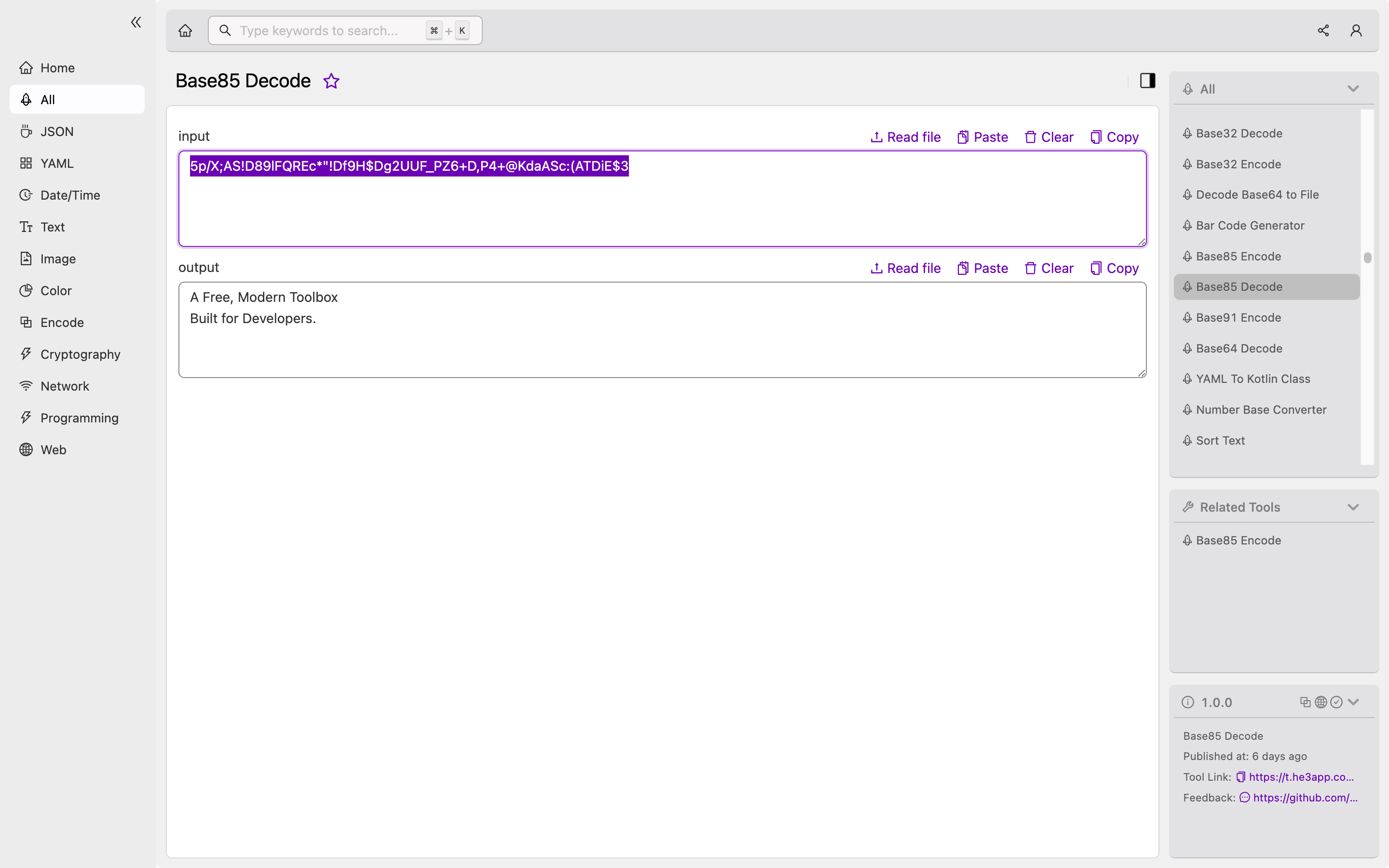Base85 Decode: What Developers Should Know
Developers are constantly seeking ways to safely and effectively transfer data across systems. One of the many techniques used for data transfer is Base85 encoding, which is a type of binary-to-text encoding. Base85 encoding is widely used due to its high efficiency as it uses fewer characters to represent the same data than other encoding options. In this article, we will dig into the concept and working of Base85 decoding.
How Base85 Decode works
Base85 decoding is a process of converting base85-encoded data back to its original binary form. The process starts by separating the encoded text into 5-byte blocks where each block is used to calculate the corresponding 4-byte binary value. The 85 characters used in Base85 encoding represent a range of values between 0 and 84. Each character is assigned a unique value, and these values are used to calculate the binary values.
The decode process involves reversing the encoding process. The 5-byte blocks are first converted to a decimal number, which is then divided by the base (85) to derive the individual character values. The remainder of this division is used to calculate the next character value until all the blocks have been processed. The resulting characters are concatenated into a single string, which represents the decoded data in its original binary representation.
Sample Code
Here is a sample code snippet in Python for Base85 decoding a string:
import base64
def base85_decode(encoded_text):
return base64.a85decode(encoded_text)
Or you can use Base85 Decode tool in He3 Toolbox (https://t.he3app.com?m76d ) easily.

Scenarios of Base85 Decode for Developers
Base85 decoding is mostly used in scenarios where large binary files need to be transferred over networks that are unreliable and slow. It is also commonly used in data compression, including image and video compression.
Key Features
Here are some key features of Base85 decoding:
- It is highly efficient and uses fewer characters to represent the same data when compared to other encoding options.
- It is widely used in data compression and transfer scenarios.
- The encoding process is reversible, which ensures that the original binary data is preserved during transmission.
Misconceptions and FAQs
Misconception: Base85 encoding and decoding can be used for encryption.
Base85 encoding and decoding are not encryption techniques. While they do obscure the data, they do not provide any security features or encryption of the data.
FAQ 1: Can Base85 encoding be used in place of Base64 encoding?
Base85 encoding is more efficient than Base64 encoding, but it is not supported by all systems. As such, you should only use Base85 encoding in scenarios where it is supported by both the sender and receiver systems.
FAQ 2: Why is Base85 encoding not widely used in software development?
Base85 encoding is not as widely used as Base64 encoding because it is not supported by all systems. Additionally, it adds an extra level of complexity to the encoding and decoding processes.
Conclusion
Base85 decoding is an efficient and widely-used technique used for transferring large binary files over unreliable and slow networks. It is an essential skill for developers working on data compression and transfer solutions. For more information on Base85 decoding, check out Wikipedia’s Base85 article.
